|
Another use of general aviation is bringing health professionals to locations that may not have access to health care. For this trip, Susan and I are joining a group of pilots called the Flying Samaritans flying to San Felipe, Mexico to do a free eye health clinic. There's a total of five airplanes of various models including a C-182, a C-210, a Bonanza and a Malibu. Most of them took off from Modesto; some flew out the day before. Another group was also driving. These group are composed of volunteers and an eye doctor; they're also bringing eye exam equipment and prescription glasses to be given away. The trip started in Vacaville - Nut Tree Airport (VCB). The forecast for the early morning departure was low overcast in Napa. So, I moved the Piper Archer to Vacaville the day before which is always has clear skies. The first leg was Vacaville to Delano (DLO). We took off around 6:30 am, cruised at 7,500 feet, and landed in Delano about 2 hours later. We refueled and took a quick break to the nearby Aviator Casino (--- they were actually closed for cleaning but they let in for coffee and pineapple juice). Next leg was from Delano to Calexico (CXL). We crossed the Sierra Mountain range at 9,500 feet, then flew over Lancaster, the Mojave Desert, Cajon Pass, Banning, Palm Springs, Salton Sea, Imperial, then to Calexico --- our last stop before entering the Mexico airspace. It was getting warm and we felt the effects of the heat causing continuous mild turbulence from Banning all the way to Calexico. After refueling and a quick break in Calexico, we took off somewhat sluggishly as an effect of higher density altitude from the Calexico heat. Before entering the Mexico airspace, we contacted the Mexicali tower at 118.20 who simply asked where we came from, our destination and asked us to report back 40 miles south of Mexicali. The mild turbulence continued as we flew over the Baja California desert at 5,500 feet. At 20 miles from San Felipe, we contacted San Felipe tower at 118.50 as we descended to calmer air. The tower provided us with wind direction, the preferred runway and traffic advisory ---- and that's it; no clearance to land. San Felipe is an airport of entry, thus, the designation as an international airport. The first group of personnel who greeted us are the armed federales; they were polite and simply wanted to see to see my pilots license. This is part of Mexico's anti-drug efforts; in years past, there were incidents of airplanes stolen in Mexican airports and end up being used in the drug trade. There's no tie downs in the ramp; we brought our own tie down ropes to secure the plane to the ramp rings. It was hot. So, after we secured the plane, we hurried inside for the customs and various aviation entry paper works. Everyone was polite, professional, courteous and communicated well in English. After these processes, we were met by a local volunteer who drove us to our hotel --- El Cortez Hotel. The following day, we spent it helping out in the eye clinic. It was a joint effort with the local Lions Club and Mission San Felipe Church congregation. The Flying Samaritans provided the eye professionals, volunteers, exam equipment and the prescription glasses to be given away. It's interesting to note that the local Lions Club are composed mostly of US and Canadian expats and "snowbirds". These North American expats and seasonal "snowbirds" are major contributors to the local economy. They are also doing various charitable works for the locals. The next day, we head back to the San Felipe airport around 8:00 am. Processing with the local customs and aviation officials were quick and professional. We were the first to take off. This time around, the flight was smooth. Around 60 miles from Calexico, I contacted San Diego FSS at 122.60 for our return cross border flight plan and for them to update the US customs in Calexico of our estimated arrival time. Around 20 miles from Mexicali, I contacted the Mexicali tower to report our position, and switched to the Calexico CTAS frequency at 10 miles south from Calexico. As I landed, a Pilatus from La Paz was right behind me. After landing, the procedure was to taxi following the blue line in front of the customs office and wait inside the aircraft for the customs officials. The customs officials came out right away, did a quick walk around; I may have noticed one bringing some sort of gieger counter. I was told that at times, they will also bring a dog to sniff around the plane. After that quick walk around, the customs official waved at us to go inside the office. Once inside, another personnel checked our passports, my pilot's license and medical, and the aircraft registration and airworthiness. And that was also a quick process. After refueling in Calexico, we took off for our return flight requesting flight following with LA Center at 128.60. The flight was smooth at 8,500 feet. We were planning our next fuel stop at Bakersfield Muni (L45) but was instead diverted to Banning when the Piper developed engine issues. A local mechanic who happens to drop by did some diagnostics and suspected either a clogged carburator jet, or stuck float. Susan and I ended up driving home in a rented car and leaving the Piper at Banning. We also took the carburator with us for our club mechanic to check. This is my first international flight to Mexico. Several pilots have apprehensions flying across the border. But as long as you do your homework ahead of time, the process is really no big deal. First, obtain the CBP decal ahead of time, and open and complete the eAPIS passenger manifest before the flight. Before taking off to cross the border, file a round trip cross-border VFR flight plan, and open it inflight before crossing the border. At the Mexico airport of entry, they will ask for the passports; and for the pilot, they will also ask to see the pilot's license, latest medical, aircraft worthiness, registration and Mexican issued insurance. Once shown these documents, they will complete all the documents for you (in Spanish), you pay the fees and that's it. For the return flight to the US, call up FSS over the radio about 60 miles from the border to open the return leg of the cross border flight plan, and ask the FSS to update the US customs of your ETA. At landing at the US airport of entry, stay in the aircraft until the customs personnel asked the pilot and passengers to go inside the office. Inside the office, the pilot and passengers will be asked to present their passports; and for the pilot, they will ask to see the pilot's license, latest medical, aircraft worthiness, registration, and the CBP decal. I was also advised to keep a print out of the eAPIS manifest handy in case the customs officials cannot it in their system. And that's it. |
|
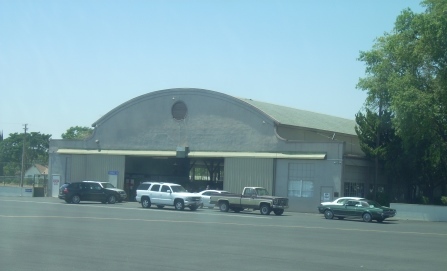 |
Modesto hanger for the Commemorative Air Force museum where I met members of the Flying Samaritans a week before for flight plan briefing. |
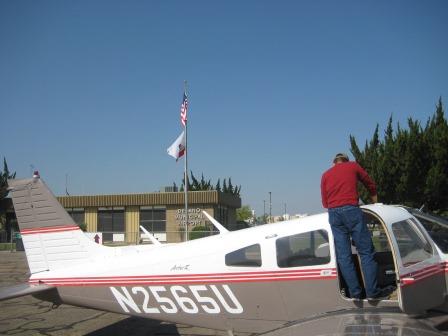 |
At Delano pre-flighting before taking off for the next leg. |
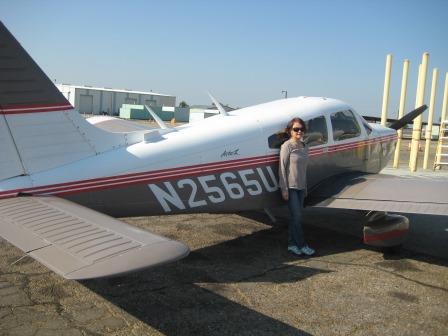 |
Susan at the Delano fuel station. |
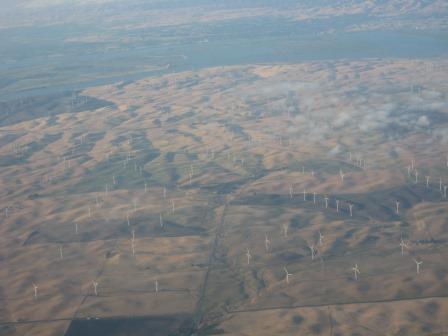 |
Crossing the Sierra Mountain range at 9,500 feet; the windmills are part of wind generating farms around the Tehachapi area. |
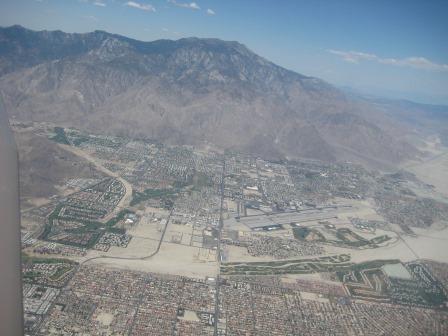 |
Flying over Palm Springs; at the background is Mt. San Jacinto towering all the way to 11,000 feet. |
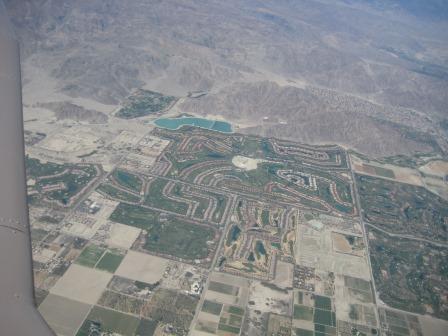 |
Flying over various golf courses around Palm Springs/ Indio area. |
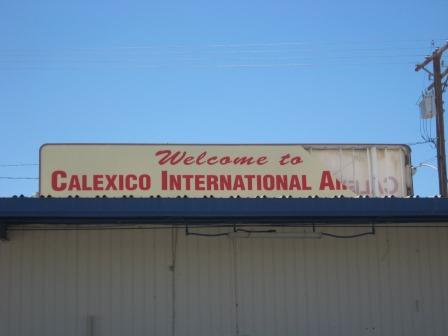 |
Calexico International Airport; our last stop before entering the Mexico airspace. |
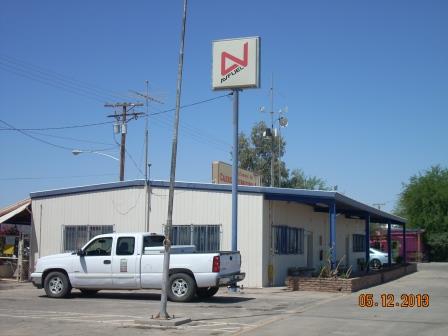 |
Calexico airport and customs office building. |
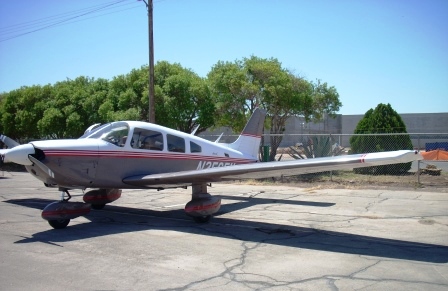 |
The Piper Archer at the Calexico transient ramp. It was hot Calexico in this trip. |
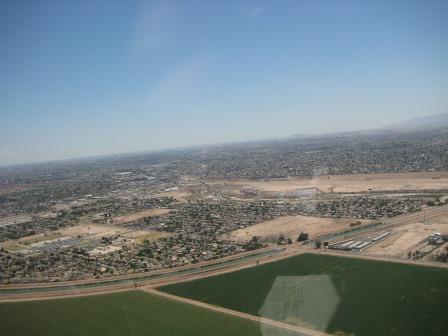 |
About to fly over the US/Mexico international border. |
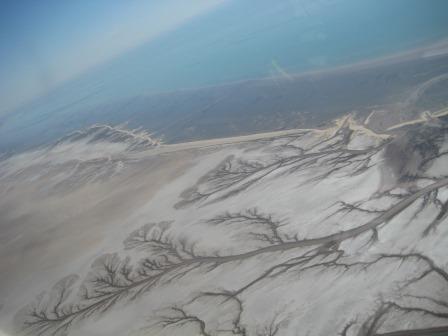 |
Interesting formations as the Baja California Desert meets the Gulf of California water. |
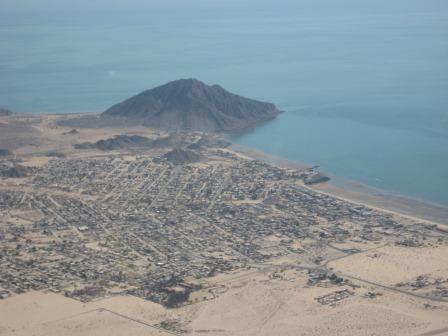 |
Flying over San Felipe with the landmark mound. |
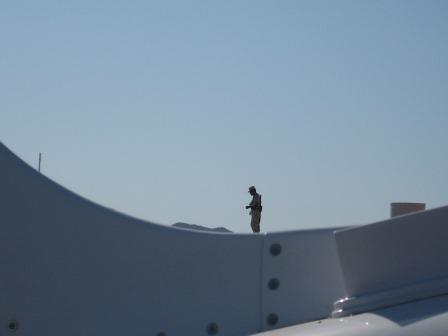 |
Immediately after landing, expect to be met by armed federales. |
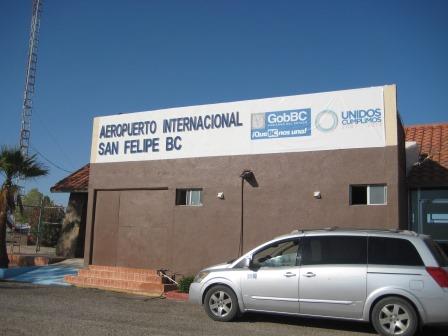 |
San Felipe International Airport. |
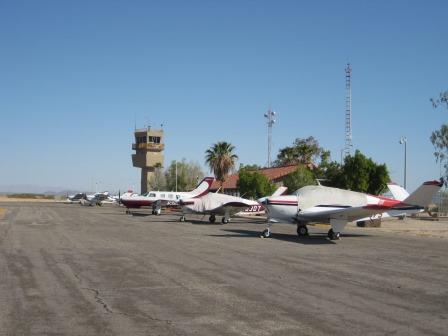 |
Airport ramp in San Felipe. The Bonanza and the Malibu are part of the Flying Samaritans; further to the left are the C-182 and C-210 that are also part of the Flying Samaritans that arrived the day before. |
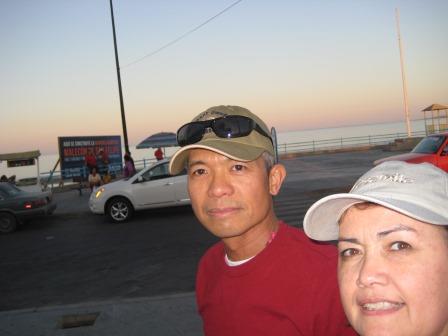 |
Susan and I exploring the San Felipe malecon shortly after our arrival. |
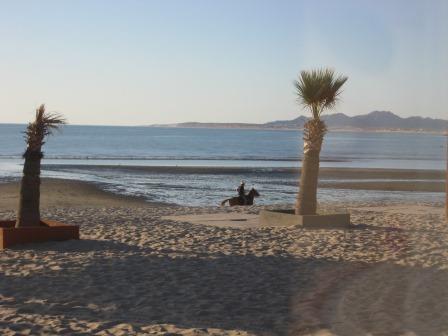 |
A gorgeous view from our hotel window the following morning; this day, we will be doing volunteer work at the eye clinic. |
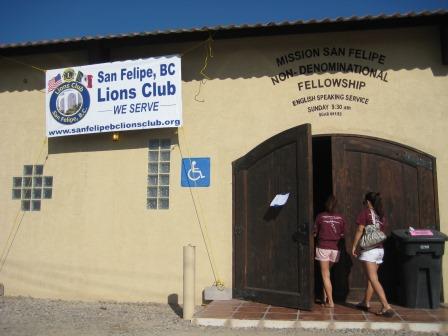 |
Going to work; the eye clinic was held in this church and also coordinated with the local Lions Club composed of mostly American and Canadians expats. |
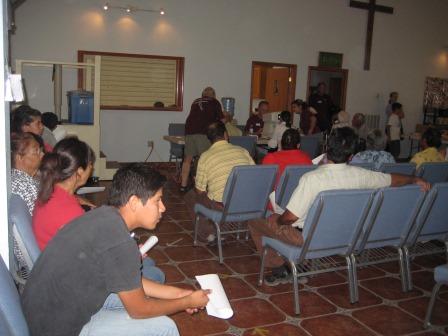 |
Eye refraction machine manned by Flying Samaritan volunteers, and with "patients" waiting for their turn. |
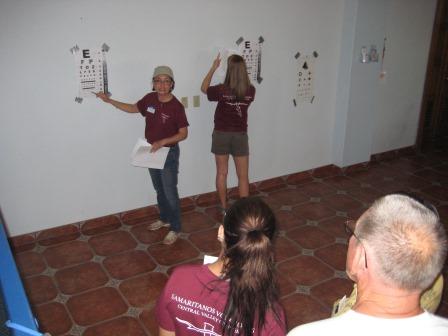 |
Susan conducting a vision test. |
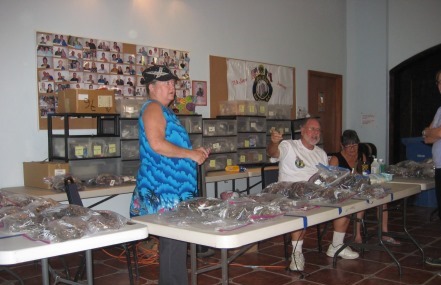 |
The prescription glasses station where "patients" were given prescription glasses after their eye exams. |
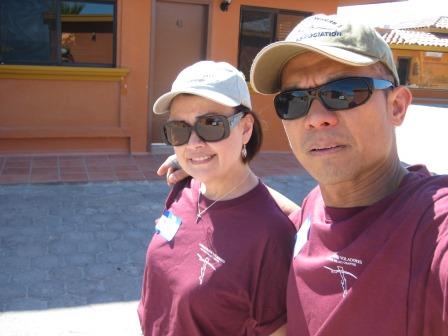 |
Heading back to the hotel after the medical mission. |
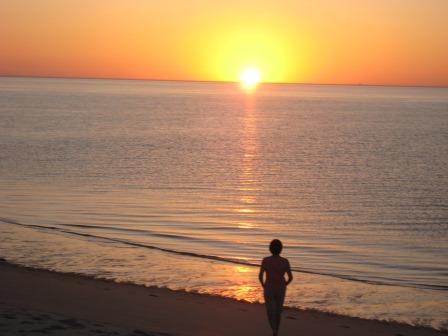 |
Susan greeting another gorgeous San Felipe sunrise; this day, we'll be heading home. |
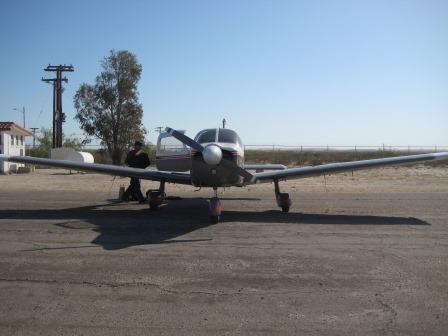 |
Around 9:00 am, loading up the gears at San Felipe airport after going through the customs and pilot paperworks for the return trip. It was already getting warm. |
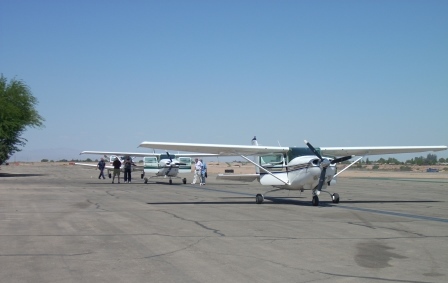 |
After an hour flight from San Felipe, back in the US in Calexico as the airport of entry. Here, airplanes entering the US line up for customs processing. |
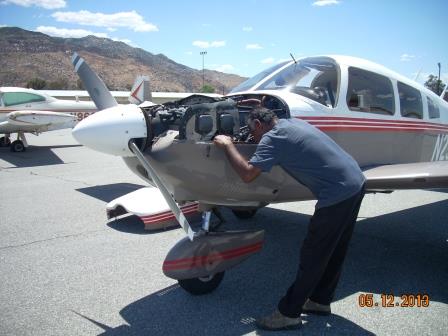 |
The return flight was smooth. Unfortunately, the Piper Archer developed engine problems that we have to make an unplanned landing in Banning and end-up driving home in a rental car. Efren, a local mechanic, checking on the aircraft. |
| [Return to Top] | [Main] |